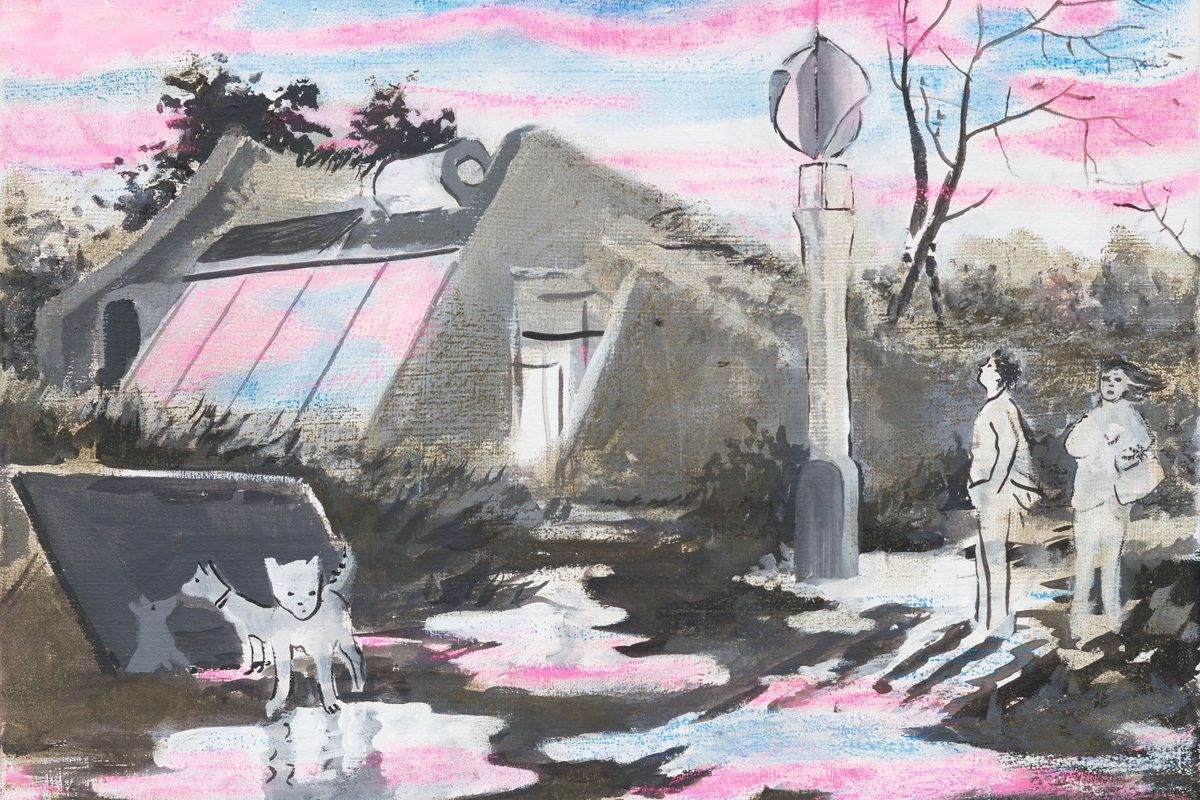16.02 – 7.04.2018
Opening Thursday 15 February, 6.30pm
Tilo Baumgärtel | Peter Busch | Tom Fabritius | Rosa Loy | Christoph Ruckhäberle
Malerei aus Leipzig
curated by Ivan Quaroni
Antonio Colombo Arte Contemporanea is proud to present “Malerei aus Leipzig”, an exhibition that gathers for the first time in Italy a nucleus of works by some of the most interesting contemporary German painters belonging to the so-called New Leipzig School: Tilo Baumgärtel, Peter Busch, Tom Fabritius, Rosa Loy and Christoph Ruckhäberle, all former students of the Hochschule für Grafik und Buchkunst in Leipzig.
The outburst of contemporary German painting is due in part to some factors such as, for example, the rigorous academicism favored by the art schools of the former East Germany – in particular the Academies of Leipzig and Dresden. The wall that had divided East Germany from Western Europe for forty years had, in fact, allowed the students of the Academies beyond the Iron Curtain to continue to study the tradition of Cranach and Beckmann, while in West Germany Joseph Beuys’ conceptual approach was spreading.
To fascinate the German public was, initially, the virtuosity of a painter like Neo Rauch, author of a surprising crasis between the values of traditional painting and the formulations of socialist Realism, already swept away by the process of national reunification. On the basis of Neo Rauch the phenomenon of the New Leipzig School was born, an extraordinary congeries of talents that in fact has marked the rebirth of German figurative painting.
The artists
Tilo Baumgärtel was born in Dresden in 1972, he lives and works in Leipzig. He attended the Hochschule für Grafik und Buchkunst in Leipzig from 1991 to 1994 and is part of a group of young painters, including Matthias Weischer, Christoph Ruckhäberle and others. The common trait of the group is their production of large figurative oil paintings. His paintings originate, in their conception and dramatic use of shadow, from realistic social works and propaganda posters.
Peter Bush was born in 1971 in Sondershausen, he lives and works in Leipzig. He attended the Hochschule für Grafik und Buchkunst in Leipzig and then participated in solo exhibitions at Kleindienst gallery in Leipzig, LIGA in Berlin, Nicolai Wallner in Copenhagen. His pictorial work focuses on marginal places: the edge of a park, a decadent wall or an empty fountain. Busch always mixes his colors with white paint, in order to soften the blue and green tones. This technique serves to fade the color palette of his paintings, immersing each scene in a dreamlike and suspended atmosphere.
Tom Fabritius was born in Radeberg in 1972, he lives and works in Leipzig. He attended the Hochschule für Grafik und Buchkunst in Leipzig. His paintings are characterized by a light, liquid, sometimes gaseous painting, which doesn’t correspond to the sharpness of the media images inspired by it. All the scenes, the characters, the environments of Fabritius’ paintings are, in fact, taken from television. They are real frames extrapolated from the media, through a photographic report that is as casual as it’s constant.
Rosa Loy was born in Zwickau in 1958, she lives and works in Leipzig. She attended the Hochschule für Grafik und Buchkunst in Leipzig. Together with her husband, Neo Rauch, Loy is associated with the New Leipzig School. Her paintings are made with casein, a water-based paint derived from milk proteins. The heavy body of the casein creates sturdy masses of paint, to which the brush strokes of Rosa Loy confer an intense quality. The main theme of the artist is the coupling of two female doppelganger, whose ambiguous relationship alludes to the psychoanalytic themes of sexuality.
Christoph Ruckhäberle was born in Pfaffenhofen an der Ilm in 1972, he lives and works in Leipzig. He first studied Animation at the California Institute of Arts, then Painting and Graphic at the Hochschule für Grafik und Buchkunst in Leipzig. He’s known for his pictorial style, dominated by angular shapes and bold colors, in which reminiscences of socialist Realism, German Expressionism, Cubism, Pop Art and Folk Art are mixed together. In his figurative painting the artist gives equal importance to human figures and interiors and shows a particular fondness for the ornamental motifs of fabrics and wallpapers, which he often reproduces on an environmental scale, as a background in the installation of his works.

